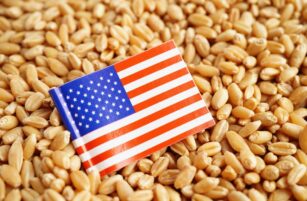Insight Focus
- US renewable diesel policy driving new world order in vegetable oil.
- Policy developments engender changes in global trade of soybean, soybean meal, and palm oil.
- These changes become meaningful for policy makers in China, Argentina, Malaysia, and Indonesia.
A demand bull market has emerged in the global vegetable oil markets and could reorient global trade flows in vegetable oils and vegetable protein meals.
Putting questions around sustainability aside, the petroleum industry and the agricultural industry have finally found fuel policy harmony in renewable diesel, a fuel that both sides continue to support. While, historically, the petroleum industry has agitated against fuel policy, mandating the blend of ethanol and biodiesel into petroleum fuels, it has embraced renewable diesel as evidenced by three legacy petroleum players (Phillips 66, Marathon, and Chevron) partnering with soy processors to build greenfield soy processing capacity.

An extraordinary build out of US soybean processing capacity is under way as the country’s soy processing industry responds to announcements from the US petroleum refining industry of its intended capacities to create hydrotreated vegetable oil (HVO), a “drop in” fuel that is technically indistinguishable from hydrocarbon-based fuels.
Unlike corn and sugar ethanol and biodiesel, renewable diesel does not require separate handling, storage, and logistic configurations and policy does not feature a blend limit. The potential for renewable diesel getting further processed for sustainable aviation fuel also provides significant demand for soybean oil as a feedstock.

A quick glimpse at soybean oil prices earlier this year at the Chicago Mercantile Exchange reveals the impact over the last year. As of January 28, 2022, nearby soybean oil prices stood at 65.25 c/lb versus year ago at 44.50 c/lb (a 47% increase). While overall prices in the soybean complex have trended higher for soybeans and lower for soybean meal, a result, in part, of the increased supply of soybean meal following 2021’s record autumn harvest soybean crushing rates, it’s the change in soybean oil prices that likely provides leadership in price discovery in the grain and oilseed complex in the coming years.

Renewable diesel policy implementation has generated capex decisions from the US soybean processing industry, anticipating a new level of predictable, robust demand for soybean oil as a feedstock for renewable diesel. As of this writing, and since the first announcement in April 2021, the US soybean industry has announced over 400m bushels of additional soybean crushing capacity to be built by 2025 (the majority coming online in 2024), with more announcements likely coming later this year (for perspective, the US likely crushes 2.19b bushels of soybeans during 2021/22).
This will be the first time in the US’ soybean crushing history that plants get developed due to demand for soybean oil, only 11.7lb of a 60lb bushel of soybeans. Historically, soybean processing companies have increased capacity to meet domestic and global vegetable protein consumption, primarily to the poultry and swine industries that consume most of the soybean meal produced.

The coming change in trade flows begins with a redirection of US soybean exports, over 60% of which head to China, back into domestic channels, i.e., a partial withdrawal of the US. from the global soybean trade. China has historically enjoyed the benefit of expanded US soybean production with half of the crop grown year in and year out for international markets (the other half processed domestically).
As US domestic demand for soybeans expands, the Chinese will need to come to terms with an early 1990s policy that promoted the importation of soybeans, not soybean products. How Chinese policy evolves over the coming years will determine whether the US domestic markets and export markets can absorb the significant expansion in soybean meal production that necessarily comes with soybean oil extraction.

Additional crushing capacity of 400m bushels would yield 8.8m tonnes of additional soybean meal. Current US domestic consumption for soybean meal averages 37m tonnes, according to USDA forecasts. A Chinese policy decision to accept soybean meal imports to replace lost US soybean availability would provide a very favourable outcome for those announcing and building soybean processing plants today. It would, in effect, solve the riddle of what to do with the dramatic increase in soybean meal due to policy.
Alternative global markets exist for US soybean meal, but expansion of US global share would come at a loss for the world’s largest exporter of soybean meal and soybean oil, Argentina, causing a second interruption to global trade flows. Historically, Argentina has dominated global trade in soybean products, a result of policy formed to support value-added processing instead of raw material exports (historically a strategy pursued by Brazil and in part the US).
Argentine soybean production has stagnated over the years, marginalising its role in global trade while Brazil continues to expand production and exports. As the US petroleum industry capitalises the build out of US capacity, it leaves Argentine industry exposed to its legacy facilities, underinvested and likely higher cost facilities.

Finally, a Chinese policy shift that supported the import of US soybean meal would necessarily require the replacement of the soybean oil that historically was provided by soybean imports and processing. For the Chinese, the obvious alternative is palm and the origins for this oil are Malaysia and Indonesia. The Chinese face a major hurdle in Malaysia with aging plantation and stagnant production and in Indonesia with slowing production and a growing use of the oil for its own domestic biofuel.
For further information, please email waltercronin@msn.com.
Other Insights That May Be of Interest…
Little Good News for Soybean Importers, Despite Record US Area
Brazil’s Meal and Oil Exports Hit Record Highs Despite Smaller Soy Crop












